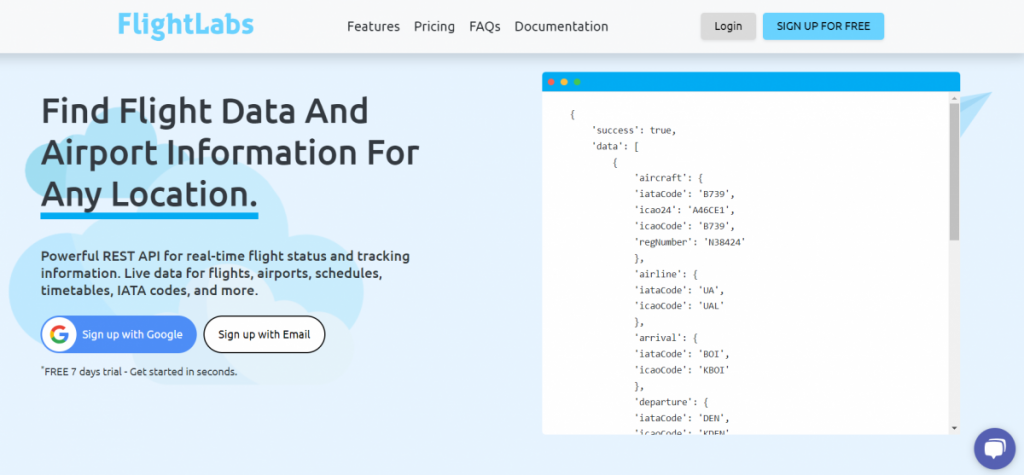ICAO codes play a significant role in the aviation industry, providing a standardized way to identify airports, airlines, and other entities. With the advancement of technology, developers can now leverage ICAO Codes APIs to integrate this crucial information into their applications. In this article, we will explore the benefits of using an ICAO Codes API and how it can enhance the functionality and user experience of aviation-related applications.
1. Access to Comprehensive Data

1.1 What are ICAO Codes?
Before diving into the benefits of using an ICAO Codes API, let’s briefly understand what ICAO codes are. ICAO codes are four-letter alphanumeric codes used to identify airports, airlines, aircraft, and other entities in the aviation industry. These codes provide a standardized and globally recognized way of referencing aviation-related entities.
1.2 Comprehensive Data at Your Fingertips
By integrating an ICAO Codes API into your application, you gain access to a vast database of comprehensive aviation-related data. This data includes information about airports, airlines, aircraft, and more. With a few API calls, you can retrieve details such as airport names, locations, ICAO codes, airline information, and even mapping between ICAO codes and IATA codes.
2. Enhanced User Experience
2.1 Accurate and Up-to-Date Information
One of the key benefits of using an ICAO Codes API is providing accurate and up-to-date information to your application’s users. Aviation-related applications, such as flight booking platforms or travel planning apps, heavily rely on accurate airport and airline information. With an ICAO Codes API, you can ensure that your users have access to the latest data, reducing the chances of errors or outdated information.
2.2 Simplified Search and Navigation
Integrating an ICAO Codes API can simplify the search and navigation experience for your application’s users. By utilizing ICAO codes, users can easily search for airports, airlines, or specific flights. These codes provide a standardized and efficient way to identify and locate entities within the aviation industry. Users can quickly find relevant information without the need for manual input or complicated search algorithms.
2.3 Seamless Integration with Other Services
ICAO Codes API can seamlessly integrate with other services and APIs, further enhancing the user experience. For example, by combining ICAO codes with a flight status API, you can provide real-time flight information for specific airports or airlines. This integration allows users to track flights, check for delays, and receive updates without leaving your application. Such integrations enhance the functionality and usability of your application.
3. Time and Effort Savings
3.1 Eliminating Manual Data Collection
Before the availability of ICAO Codes APIs, developers had to manually gather and maintain aviation-related data. This process was time-consuming and prone to errors. By utilizing an ICAO Codes API, you eliminate the need for manual data collection. The API provides a reliable and up-to-date source of information, saving you valuable time and effort.
3.2 Easy Updates and Maintenance
Another advantage of using an ICAO Codes API is that it simplifies updates and maintenance of aviation-related data. As the API provider ensures the data’s accuracy and consistency, you don’t have to worry about maintaining a separate database or keeping track of changes in the aviation industry. Updates to the API automatically reflect in your application, ensuring your users always have access to the most recent information.
4. Flexibility and Customization
4.1 Tailored User Experience
With an ICAO Codes API, you have the flexibility to tailor the user experience according to your application’s requirements. You can choose which data to display, how to format it, and how to present it to your users. This customization allows you to create a user-friendly interface that aligns with your application’s design and user preferences.
4.2 Integration with Existing Systems
ICAO Codes APIs are designed to be easily integrated into existing systems and applications. Whether you’re building a new aviation-related application or enhancing an existing one, the API can seamlessly integrate with your backend infrastructure. You can leverage the API’s endpoints and data formats to ensure smooth communication and compatibility with your system.
To make use of it, you must first:

- Go to GoFlightLabs API and simply click on the button “Sign-Up” to start using the tool.
- After signing up in GoFlightLabs API, you’ll be able to use Free Trial.
Read more: Best ip geolocation api tips to use it
Conclusion
In conclusion, utilizing an ICAO Codes APIs offers numerous benefits for developers working on aviation-related applications. By leveraging comprehensive data, enhancing the user experience, saving time and effort, and providing flexibility and customization, an ICAO Codes API can elevate the functionality and usability of your application. Whether you’re developing a flight booking platform, a travel planning app, or an airport management system, integrating an ICAO Codes API can be a game-changer. Embrace the power of standardized aviation data and take your application to new heights.

